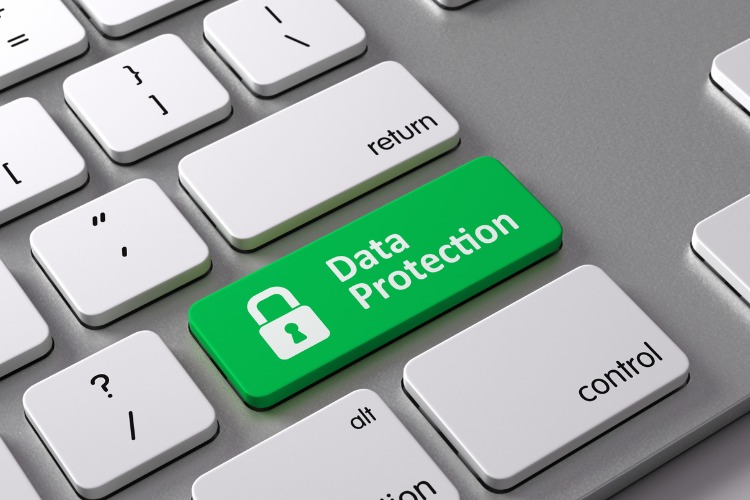Data Protection Vs. Cyber Security: Why You Need Both
In recent years, both large and small organizations have been affected by data breaches. Business owners, C-suite executives, and CIOs face the reality that they can be a target of security breaches at any time. These incidents can jeopardize your organization’s credibility besides leading to financial and productivity losses.
Data protection and cybersecurity are essential to safeguarding your organization against data breaches. New laws are getting enacted across the globe to regulate the collection, retention, use, disclosure, and discarding or personal information. Therefore, it’s important to distinguish between data protection and cybersecurity and why you need both of them.
What is Data Protection?
Organizations need to safeguard crucial information from breaches and the resultant loss. The significance of protecting your data from breaches as the amount of data that you collect and store grows. Many organizations safeguard their data so that they comply with regulations such as the GDPR. The key principle of data protection is safeguarding data as well as making it available under all circumstances.
Data protection can describe both operational data backups and business continuity/disaster recovery plans. Therefore, data protection strategies evolve along two lines: data management and data availability. The former ensures that data is safeguarded at all times, while data availability ensures that users can access data whenever they want.
What is Cyber Security?
As the name implies, cybersecurity is about protecting networks, programs, and systems against digital attacks. Malicious actors use these attacks to access, change, or destroy sensitive information, extort money from users, or interfere with normal business operations. With cybercriminals becoming more innovative, it’s getting increasingly challenging to implement adequate cybersecurity measures.
A successful cybersecurity approach should have multiple layers of protection that spread across all the networks, computers, programs, and data that you intend to safeguard. Within the organization, the people, organization, and processes need to complement each other since this is the only way of creating an effective defense against cyber-attacks. Likewise, your data protection and cybersecurity strategies should complement each other.
The Nexus Between Data Protection and Cyber Security
Few people can distinguish data protection from cybersecurity. A case in point is the recent high-profile breaches at Facebook and Equifax. Not many people can differentiate between Equifax’s data breach and Facebook mishandling of data. While one of these incidents was a hack, the other involved unauthorized data access. This highlights why organizations need both data protection and cybersecurity.
Traditionally, cybersecurity and data protection communities have remained separate. Security is generally perceived as a technical issue, while data privacy and protection is regarded as an issue relating to data access and protecting data from getting into the wrong hands. Simply put, cybersecurity is a technical way of implementing data privacy choices. However, the challenge that arises is the assumption that data access is authorized, and all entities are infallible and act in the interest of data owners.
Why You Need Both
The best thing that organizations can do to prevent data breaches is combining their data protection and cybersecurity strategies. By simply protecting your data, you’ll be doing a lot to fortify your cybersecurity stance. Looking at major breaches that have happened in the recent past, you’ll notice that most of them started with access to personal data.
Although such unauthorized access to data is often portrayed as simple security breaches, it has a substantial impact on cybersecurity. Generally, unauthorized access is a significant threat that interconnects all types of breaches. By combining your data protection and cyber-security strategies, you’ll have total control of all stages of your data lifecycle. It will also be easier for you to comply with all the applicable regulations.
Likewise, cybersecurity risks compromise the security of your data. One of the reasons hackers access the networks, systems, and programs of an organization is to get hold of users’ data. Companies have vast volumes of data at their disposal, which often acts as a bait for cybercriminals. Therefore, by ramping up your cybersecurity strategies, you’ll be playing a significant role in protecting your data.
Taking an integrated approach to data protection and cyber-security can also help you to expedite digital transformation at your organization. The data compliance and classification initiatives that you’ll undertake across the organization for different purposes will be aligned and coordinated. It also enables you to evolve your approach to cyber-security and data privacy uniformly. This plays a significant role in helping you address emerging threats and vulnerabilities.
Final Words
A data breach can occur at any time since hackers target all types of companies. The more data you have at your disposal, the more attractive you are to cybercriminals. Data protection and cybersecurity are two sides of the same coin. Integrating your data protection and cybersecurity strategies will go a long way in helping you seal potential loopholes that cybercriminals leverage to breach your system.

